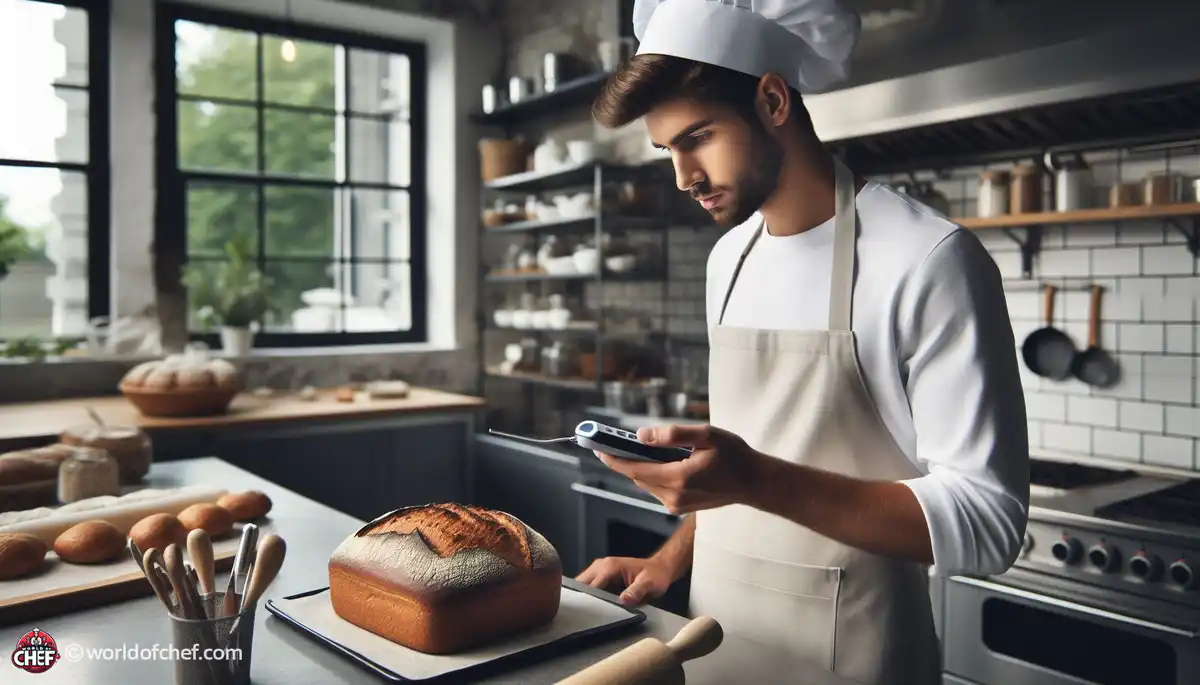
Simmering with Spices: Infusing Flavor into Your Dishes
Emery Donley - Oct 8, 2024 - 8 min read


Baking, just like every other culinary art, has a fine balance of science and creativity. Baking, in essence, hinges on the manipulation of temperature. It is this sense of understanding the science that goes into temperature control while baking that is bound to give you results, and not only results but ones that are consistent and simply delicious.
The highest role that temperature plays involves controlling how the ingredients might behave with each other upon baking. For instance, butter that is too cold will not cream properly and thus make a cake heavily dense. Likewise, curdling the batter into the undesirable texture would be found in eggs that are warmer than required. Using temperature control, there is assurance that each ingredient will perform its part harmoniously thus perfect baked goods.
Accuracy of temperatures should be measured; for a good baking session, measurement is crucially made, even when it's a measure of temperature. A reasonable investment in the thermometer is payable because you have to authenticate the temperature you're setting at the oven. You have the use of instant-read thermometers so you'll know if bread or a cake is ready.
Before any baking activity, calibrate your oven to heat evenly and at the same temperature throughout the baking cycle. Simple techniques, such as placing an oven-safe thermometer on different racks and comparing the readings, can point out hot spots or variations in temperature distribution.
Never miss preheating the oven when baking. Ensure that you allow your oven to reach the appropriate temperature before putting in your batter or dough. This will make the cake cook well, and the outcome will be consistent and well-cooked. The longer you take on preheating, it all depends on the recipes that you follow. You could find preheating in the recipe that you followed. Understand Oven Hot Spots
Even the most advanced ovens have hot spots, where the temperature might be higher or lower than the rest of the oven. Finding those hot spots is crucial in adjusting your baking strategy. Simple techniques, such as rotating your pans halfway through the baking process, can help mitigate the effects of hot spots and promote even browning.
Most modern ovens have built-in temperature controls, but these alone don't always guarantee accurate results. Oven thermometers give you an added layer of protection by allowing you to verify the actual temperature inside your oven and adjust accordingly. Be sure to place the thermometer in the center of your oven for the most accurate reading.
If you encounter uneven heating, or temperature fluctuations inside your oven don't panic. There is actually some troubleshooting that will enable you to rectify a scenario with your baking.
Here, you will not only calibrate your oven but even attempt different styles of baking. Be flexible to ensure that you achieve flawless results.
When ingredients have been left overnight or during the day at room temperature, they will usually soften completely. With some fruits, you're also certain to experience increased flavor due to the evaporation and concentration of some flavors when the ingredients spend a day at room temperature.
Many baking recipes require that butter, eggs, and even milk be at room temperature. Cold ingredients like those will warm up slightly prior to being added to a batter or dough. Once warmed, they are usually able to mix in fine with other ingredients, emulsify, and thereby blend the flavors properly in the final product. This can be done gently, warming them in the microwave or placing them in a bowl of warm water.
While some recipes use room temperature ingredients, there are others that need cold ingredients. For instance, cold butter is used in pastry recipes to create flaky layers, and chilled dough is required for shaping delicate pastries such as croissants. Knowing when to use cold ingredients versus room temperature ingredients is what is going to make you master the art of baking.
While baking in a different environment, such as a very hot summer day in the kitchen or a chilly winter day, brings some unique challenges in ingredient temperatures, one may need to chill his or her ingredients a little during warmer climates to prevent their becoming too soft. Then, on colder days, one may have to add extra time to let his or her ingredients come to room temperature. This simply means that through adapting your techniques, you are guaranteed uniform results regardless of outside weather.
There are various techniques which require precise control in terms of temperature but try different temperatures to yield a certain texture and flavors with the baked products. For example, lower oven heat plus more baking time can make a cake more tender and moist, whereas higher heat will make a bread or pastry with crust. Let your imagination run wild and test boundaries of traditional baking techniques.
Actually, mastering the technique of temperature in baking is a journey so long that it entails so much patience, much practice, and a strong know-how of how the science works. To hone his or her skills in temperature control, one can simply take his or her game in baking to new and fantastic levels and create heavenly delights for sure. Now don't be afraid and let your creativity grow to the best in the kitchen while experimenting and mastering nuances in temperature. Happy Baking!

Emery Donley - Oct 8, 2024 - 8 min read

Russell Comeaux - Oct 8, 2024 - 8 min read

Walter Backus - Oct 7, 2024 - 8 min read

Samantha Thames - Oct 7, 2024 - 6 min read